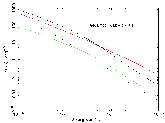 Figure 4: Expected logN - logS curve of stars, CVs and AGNs.
Figure 4: Expected logN - logS curve of stars, CVs and AGNs.The plan of the galactic core programme is to identify a sample of 1000 sources spanning a range in galactic latitude (| b | 0° _ 20°), longitude and total galactic absorption, down to a sensitivity limit of ~ 7×10-15, erg cm-2 s-1 (0.1 - 10 keV). Such a medium faint sample can be accumulated in about 20 medium deep exposures, already available from the PV and GT programme only.
A large variety of sources populate the galactic plane, ranging from supersoft binaries to very absorbed 6-s anomalous pulsars or Be/X-ray binaries. This fact, combined with the need to properly calibrate the statistical identification process, implies that we place relatively wide limits on the energy range in which source significance is tested. This in particular means the inclusion of the very soft band (0.1-0.5,keV), representing a small difference between the extragalactic and the galactic parts of the programme.
We also plan to build a galactic sample of comparable size, but at flux limits 10 times higher. The accumulation of this sample will take much longer. Of course, a large fraction of these bright sources may be readily identified from the literature or archival material, thus their identification will not require observing time at the beginning of the XID programme.
In the soft band of XMM (0.5-2~keV), the low galactic latitude landscape
is not expected to be very different from that seen by ROSAT.
A large fraction of the extragalactic background sources is shielded by
galactic absorption, and active stars dominate in number in most
directions.
The second numerically important population may be
cataclysmic variables. The situation in the hard X-ray band of
XMM (2-10~keV) is quite different.
Most active coronae do not radiate
much in hard X-rays whereas the higher energy allows X-rays from
remote CVs, X-ray binaries and AGNs to shine through the galactic
fog. In the hard X-ray band, the dominant population, even at low
latitudes, is likely to be AGNs.
The expected galactic log
N-log S curves are shown in graph 4.
Using these curves as guidelines, we anticipate that the sample of
1000 medium faint low galactic sources will contain about 300 stars,
600 AGN and may be up to 100 CVs (see Watson, 1999, for a more detailed
discussion of the likely CV source numbers).
Simple simulations suggest that
using 4m class telescopes the total stellar population should be
identified, while about 50—70% of the CVs and less than 10%
of the
AGN will have an optical identification.
The stellar and cataclysmic binary galactic samples combined with
those accumulated in the high galactic fields should be large enough
to constrain the most important population parameters such as scale
height and space density.
So far the scale height of young stars is
poorly known because of the difficulties encountered to properly
select young main sequence late type stars (F—M). On the other hand
efficient selection of such stars using X-ray data will allow to
overcome the problem.
By comparison with predictions of stellar X-ray
population models it will be possible to address the question of the
thermalisation of this young population as well as the shape of the
age vs. velocity dispersion relation associated to a process known as
'disk heating'.
 Figure 4: Expected logN - logS curve of stars, CVs and AGNs.
Figure 4: Expected logN - logS curve of stars, CVs and AGNs.
Depending on the outcome of this campaign, the XID galactic core
programme may be extended using this time X-ray / optical selection in
order to enhance the detection rate of a particular class of galactic
objects (e.g. stars).
The high-galactic latitude XID programme will
provide a quantitative estimate of the extragalactic "contamination"
in the galactic plane and vice versa will the low-galactic latitude
part of the
programme help to quantify the fraction of galactic X-ray sources at
high galactic latitudes.
The strategy of the galactic core programme is to concentrate as much
as possible on the identification of the galactic population.
Fibre spectroscopy is an efficient way to obtain spectra of candidates for
an entire XMM field. Pre-selection of candidates based on optical
colours (and perhaps X-ray or optical/UV variability) together with
the two-pass scheme proposed should yield a good
identification success rate for stars and CVs.
Last modified 26th August 1999
Text based on AXIS proposal by X.Barcons and the SSC consortium.
Page designed by J.Verdon
www_astro@mssl.ucl.ac.uk